Changing a diaper is a routine task for many caregivers, but regarding caring for a bedridden person, the process may seem daunting and unfamiliar. Diaper changing for a bedridden individual requires special techniques and considerations that differ from changing a regular diaper.
It is a delicate and intimate task that requires patience, care, and attention to the individual’s needs and comfort. As a caregiver, it is important to have the knowledge and skills to properly change a diaper for a bedridden person to maintain their hygiene, prevent skin irritation and infections, and promote their overall well-being.
Here, we will discuss the step-by-step process of changing a diaper for a bedridden person, along with important tips and tricks to make the task easier and more efficient, whether you are a family member taking on the caregiver role or a professional caregiver role.
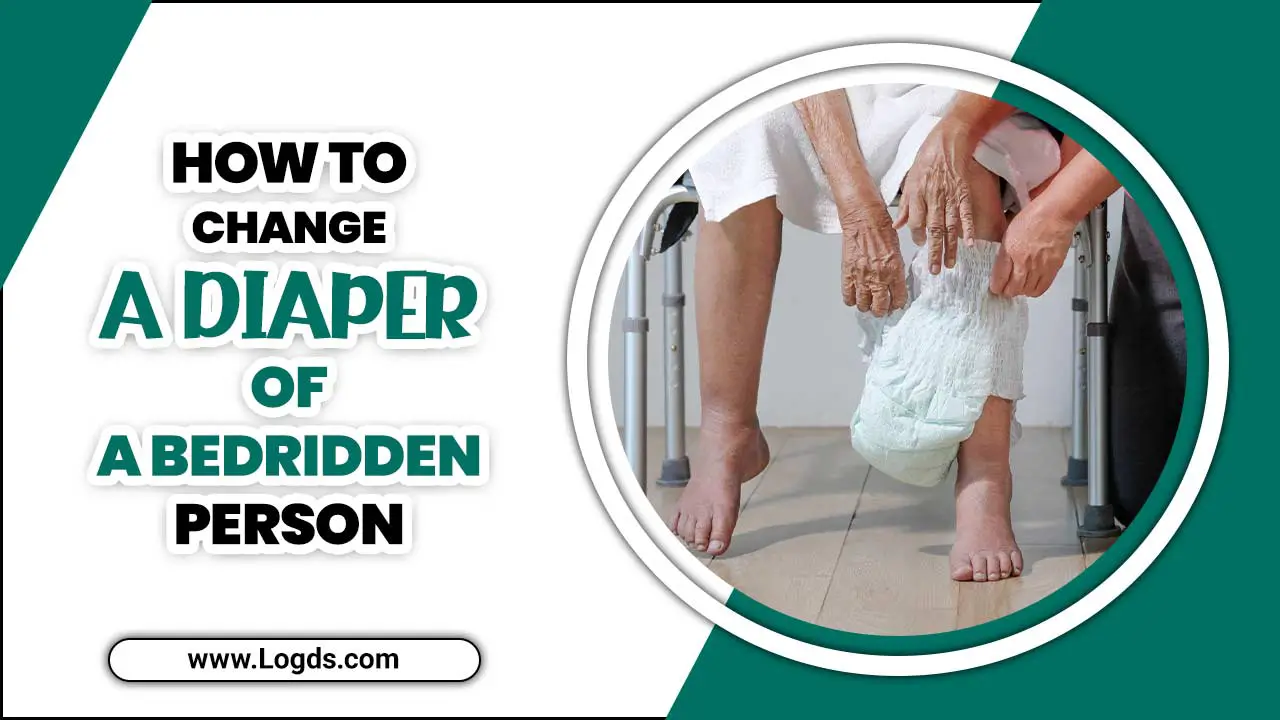
8 Effective Steps To Change The Diaper Of A Bedridden Person

Diaper changes are crucial for the health and well-being of a bedridden person. While you can use absorbency diaper cream or wipes, it is best to use a cotton cloth wipe for its anti-microbial properties. It helps prevent infections and irritation to the skin, which can lead to more serious issues such as UTIs or skin rash.
You should also wash your hands before touching the absorbency diaper area, especially if you have cuts or wounds. Diapers containing extra-soft material can be difficult to change due to their bulkiness. However, a little practice will help you with this. You need to follow these steps:
Gather Necessary Supplies (Diapers, Wipes, Gloves, And Disposable Underpads)
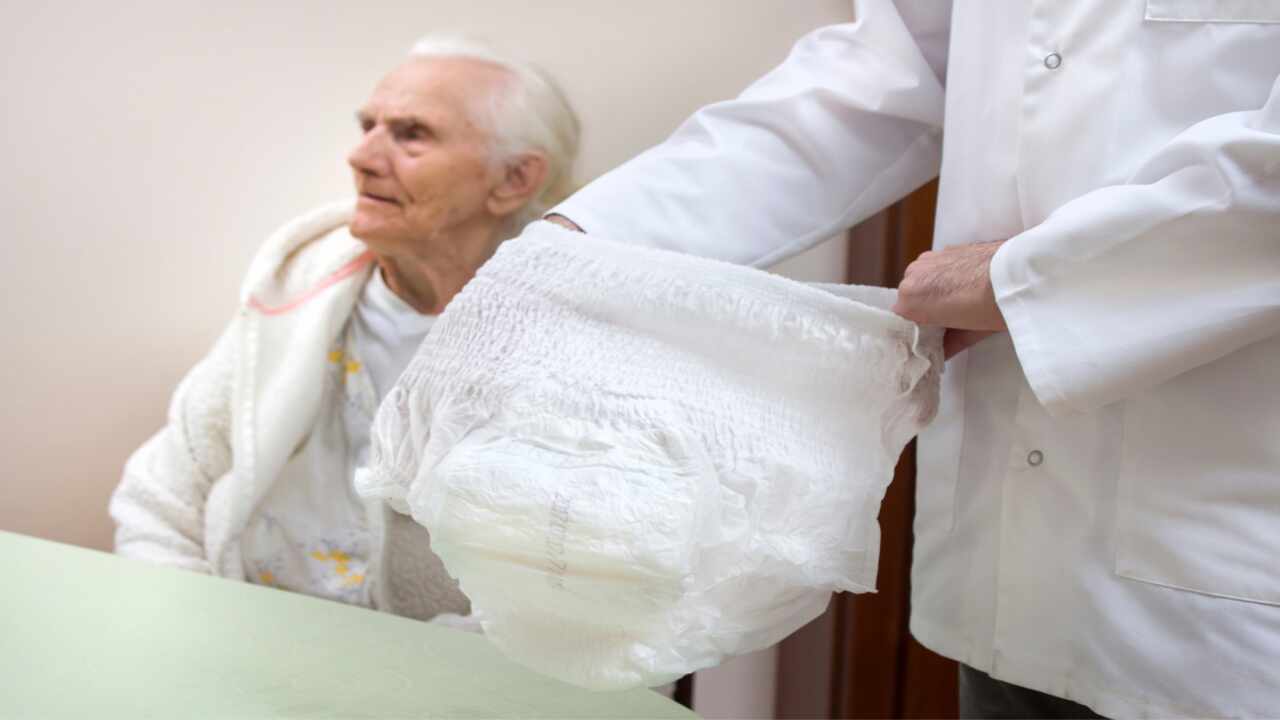
Changing the diaper of a bedridden person requires gathering the necessary supplies beforehand. These supplies include diapers, wipes, gloves, disposable underpads, and a clean adult diaper. Additionally, having barrier cream on hand may be helpful to protect the person’s skin from irritation. Ensuring you have all the necessary supplies readily available can make the diaper-changing process more efficient and comfortable for you and the bedridden individual.
Wear Gloves For Protection
When changing the diaper of a bedridden person, it is important to prioritize safety and hygiene. To protect yourself from any potential exposure to bodily fluids, it is recommended to wear gloves throughout the process. This will help prevent the spread of germs and reduce the risk of infection. Additionally, if the individual has fecal incontinence, dry wipes can effectively clean the area without causing irritation or discomfort.
Dry wipes are soft and gentle on the skin, making them suitable for sensitive areas. Remember to dispose of used wipes properly and wash your hands thoroughly after changing the diaper to maintain proper hygiene standards.
Gently Roll The Patient To One Side
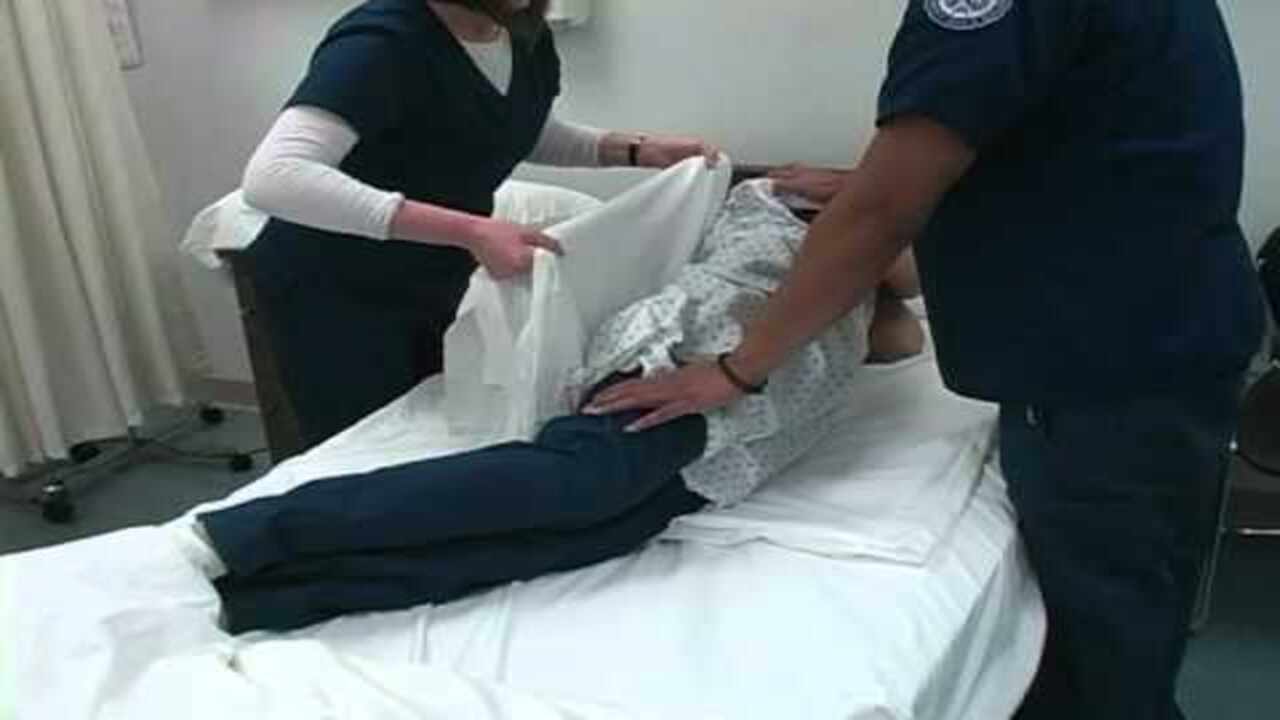
When changing the diaper of a bedridden person, it is important to handle the process with care and sensitivity. Start by gently rolling the patient to one side, supporting their body and maintaining comfort. This will allow you to remove the soiled diaper while minimizing any potential discomfort for the patient.
Before wearing a fresh diaper, check the patient for any rash or skin irritation signs. If present, apply a protective cream to help soothe and protect their skin. It is crucial to prioritize the patient’s comfort and hygiene during this process, ensuring that they remain clean and free from any discomfort caused by prolonged exposure to moisture.
Remove The Soiled Diaper And Discard
Carefully lift the person’s hips to remove the soiled diaper and place it in a plastic bag for disposal. Use wipes or a damp cloth to clean the person’s genital area, and wipe from front to back to prevent infection.
Pat the area dry with a clean towel or cloth and apply any necessary creams or ointments. Finally, secure a clean diaper, ensuring it is snug but tight. Remember to wash your hands thoroughly after changing the diaper to prevent the spread of germs.
Clean The Patient’s Diaper Area With Wet Wipes
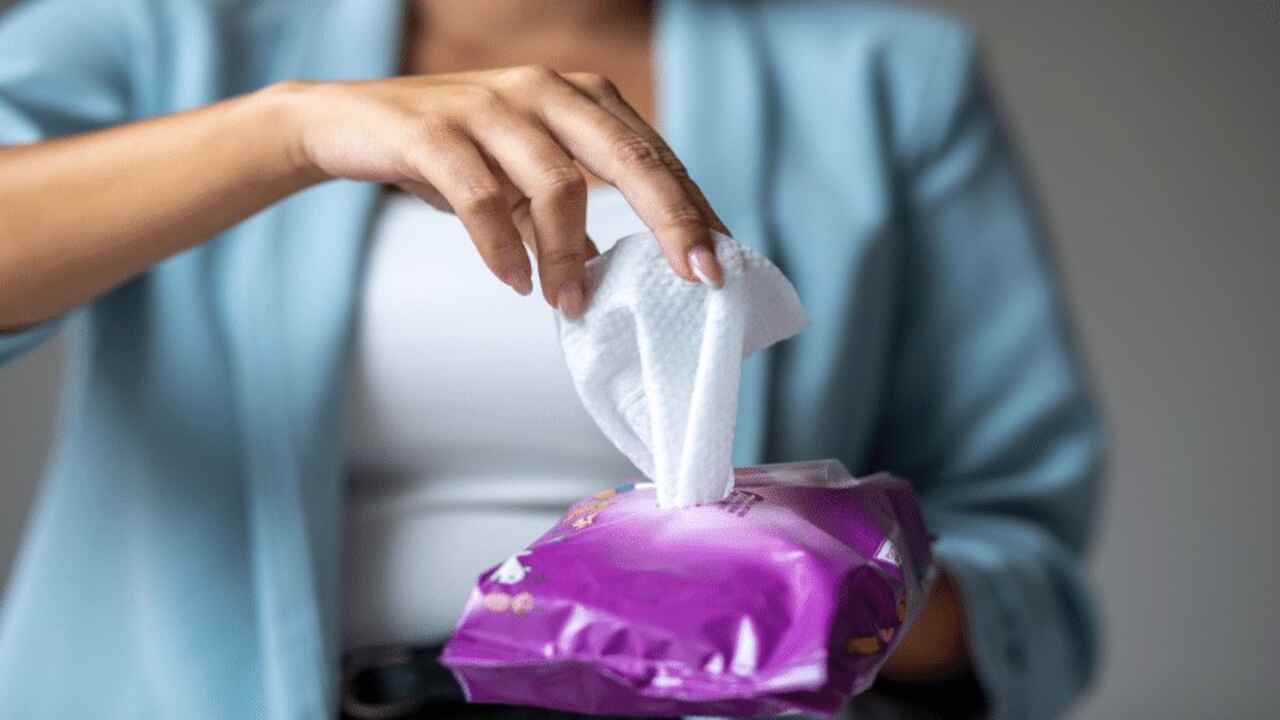
One effective way to clean the area is by using wet wipes designed for sensitive skin. These wipes are gentle on the skin and can effectively remove urine or feces without irritating. When using wet wipes, be gentle and avoid rubbing too vigorously to prevent skin damage. Additionally, be sure to dispose of used wipes properly and wash your hands thoroughly after each diaper change to maintain proper hygiene.
Apply Rash Cream If Needed
Prolonged exposure to moisture can lead to skin irritation and diaper rash, so it is important to keep the skin clean and dry. Before applying any rash cream, gently cleanse the area with mild soap and warm water, or use specially formulated wipes for sensitive skin.
Once the area is clean and dry, apply a thin layer of rash cream to protect the skin and help soothe any existing irritation. Be sure to follow any specific instructions provided by healthcare professionals or caregivers when applying rash cream, as different products may have different application methods or frequency of use.
Roll The Patient To The Other Side
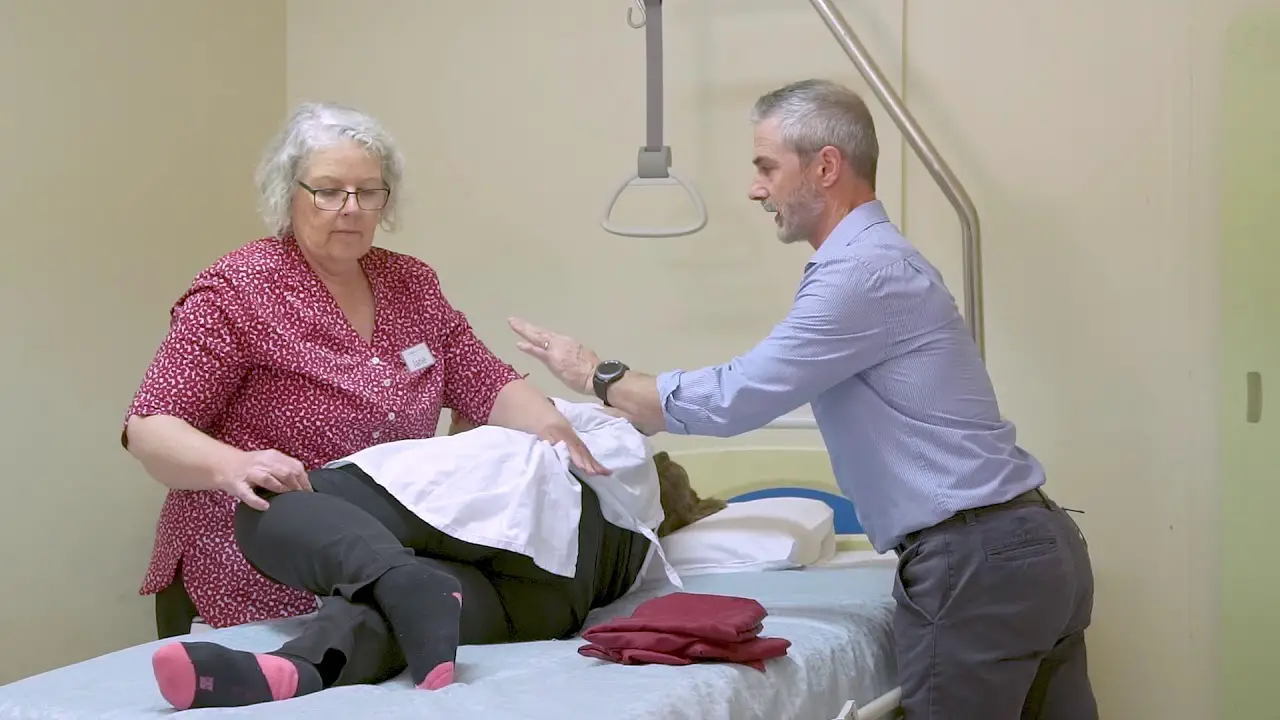
One step is to roll the patient to the other side. This helps to provide access to the diaper area and allows for easier cleaning and changing. Start by placing a barrier under the patient’s hip on the side you want them to roll towards. Then, gently grasp their shoulder and hip on that side and slowly guide them onto their side.
Support their back with a pillow or rolled-up towel if needed. Once they are in position, you can proceed with changing the diaper. Remember to be gentle and communicate with the patient throughout the process to ensure their comfort and dignity.
Position The New Diaper Under The Patient
Gently roll the patient onto their side and place the new diaper under them, with the back edge aligned with their lower back. Then, carefully roll them back onto their back and adjust the diaper to be centered and snug against their body.
Secure the tabs or fasteners tightly but comfortably around their waist to prevent leaks. Always maintain proper hygiene practices throughout the process, washing your hands thoroughly before and after each diaper change.
How To Position The Person For Effective Diaper Changing
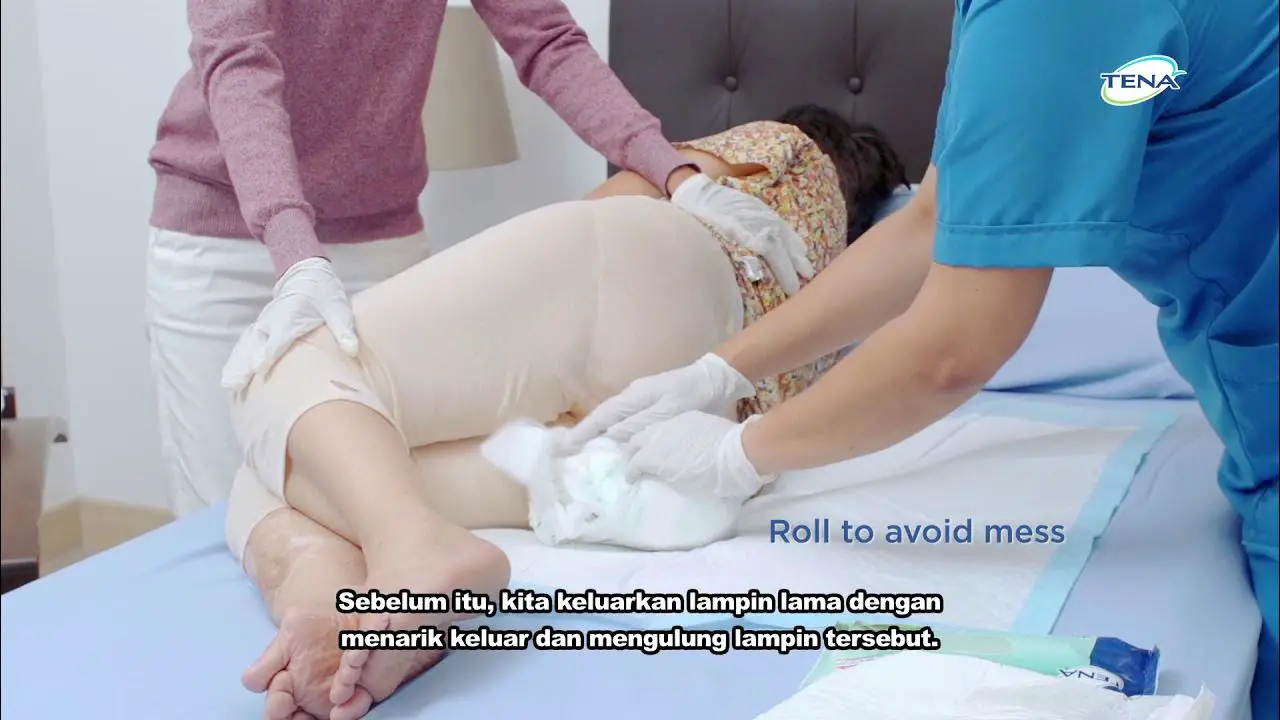
The diaper of a bedridden person or someone who cannot move much is essential to place them in a comfortable and safe position. For a bedridden person, laying them on their back and using pillows for head and neck support is best.
If they can sit, place them on the edge of the bed or a toilet seat, and if they can stand, be sure to provide support for their hips and waist. The most vital aspect is positioning them to allow you to access the diaper ready comfortably and make the changing process as easy and quick as possible.
How To Clean And Disinfect The Area After Diaper Changing
After changing a bedridden person’s diaper, cleaning and disinfecting the area is essential. Start by washing your hands thoroughly with soap and water before beginning the cleanup process. Next, use a wet and warm towel or scented wipes to clean the diaper area of the person. Ensure you cover all areas and crevices to avoid any unwanted surprises. Remember to dry the area with a dry towel to prevent chafing.
If needed, apply an anti-rash cream to the diaper area. It not only prevents rashes but also soothes any irritation the person may have. Moreover, use a perineal wash after a bowel movement to remove odor and clean the area thoroughly. Remember to dispose of the used wipes and Diaper pads correctly. These simple steps will keep the disabled individual clean, healthy, and comfortable.
Maintaining Hygiene And Preventing Infections
When caring for a bedridden individual, using a diaper is essential to maintaining hygiene and comfort. A diaper specifically designed for adults: Friends’ correct-size diapers are a practical solution that ensures dignity and cleanliness for those unable to use the restroom independently.
These specialized comfortable diapers are crafted from high-quality materials that are both absorbent and gentle on the skin, minimizing the risk of irritation and discomfort. Here are maintaining hygiene and preventing Infections:
- Wash your hands regularly with soap and water for at least 20 seconds.
- Use hand sanitizers with at least 60% alcohol when soap and water are unavailable.
- Cover your mouth and nose with a tissue or elbow when coughing or sneezing.
- Avoid touching your face, especially your eyes, nose, and mouth.
- Clean and disinfect frequently touched objects and surfaces regularly.
- Practice good respiratory hygiene by properly disposing of used tissues.
- Maintain a clean and tidy living space to reduce the risk of infections.
- Follow proper food safety practices, such as washing fruits and vegetables before consumption.
Dealing With Challenges And Difficult Situations

Dealing with challenges and difficult situations can be tough, but it is an inevitable part of life. When faced with such circumstances, staying calm and approaching the situation positively is important. The primary purpose of a well-fitted diaper for a bedridden person is to effectively manage and contain bodily fluids, including urine and feces. Here are some tips to help you navigate through challenges:
- Assess The Situation: Take a step back and objectively evaluate the challenge. Understand the root cause and identify any possible solutions.
- Break It Down: Sometimes, challenges can seem overwhelming. Break them down into smaller, manageable tasks. This will make it easier to tackle and give you a sense of progress.
- Seek Support: Don’t hesitate to seek help when needed. Talk to friends, family, or colleagues who can provide guidance, advice, or a listening ear. Sometimes, an outside perspective can offer valuable insights.
- Stay Positive: Maintaining a positive outlook can significantly affect how you approach and overcome challenges. Focus on potential solutions rather than dwelling on the problem itself.
- Learn From Setbacks: Challenges often come with setbacks. Instead of being discouraged, view these setbacks as opportunities for growth and learning. Analyze what went wrong, adjust your approach, and keep moving forward.
- Practice Self-Care: Dealing with challenges can be mentally and emotionally draining. Take care of yourself by practicing self-care activities such as exercise, getting enough sleep, eating healthy, and engaging in hobbies or activities that bring you joy.
Conclusion
Changing the diaper of a bedridden person can be a challenging task, but with proper preparation and technique, it can be done efficiently and with care. It is important to prioritize the comfort and dignity of the person while also maintaining their hygiene. Always prioritize the comfort and dignity of the person in your care, and take necessary precautions to prevent discomfort or skin irritation.
Gather all necessary supplies, communicate with the person, make them comfortable, and properly dispose of the used diaper. Changing an absorbency diaper for a bedridden person can easily become routine with patience and practice.
Frequently Asked Questions
How Do You Do A Diaper Change In A Bedridden Patient?
To do a diaper change on a bedridden patient, gather all the necessary supplies, such as a clean, well-fitted diaper, wipes, gloves, and a waterproof pad. Position the patient on their side and place the waterproof pad underneath them.
How Often Should You Change A Bedridden Person’s Diaper?
The frequency of changing a bedridden person’s diaper tabs depends on their individual needs and level of incontinence. It is recommended to change the diaper pail every 2-4 hours or when it becomes soiled or wet.
Which Diaper Is Best For Bedridden Patients?
The best diaper for bedridden patients provides maximum absorbency, comfortable fit, and skin protection. Look for fresh diapers for extended wear, such as those with high absorbency levels and leak guards.
How Do You Treat A Bedridden Patient?
Treating a bedridden patient involves several key steps. Ensure their comfort by providing a supportive mattress, pillows, and bedding. Regularly reposition the patient to prevent bedsores and maintain their skin health.
How Do You Prevent Urinary Tract Infections In Bedridden Patients?
To prevent urinary tract infections (UTIs) in bedridden patients, it is important to maintain good hygiene practices. This includes regularly cleaning the genital area, using proper cleaning techniques, and ensuring the patient stays dry.

